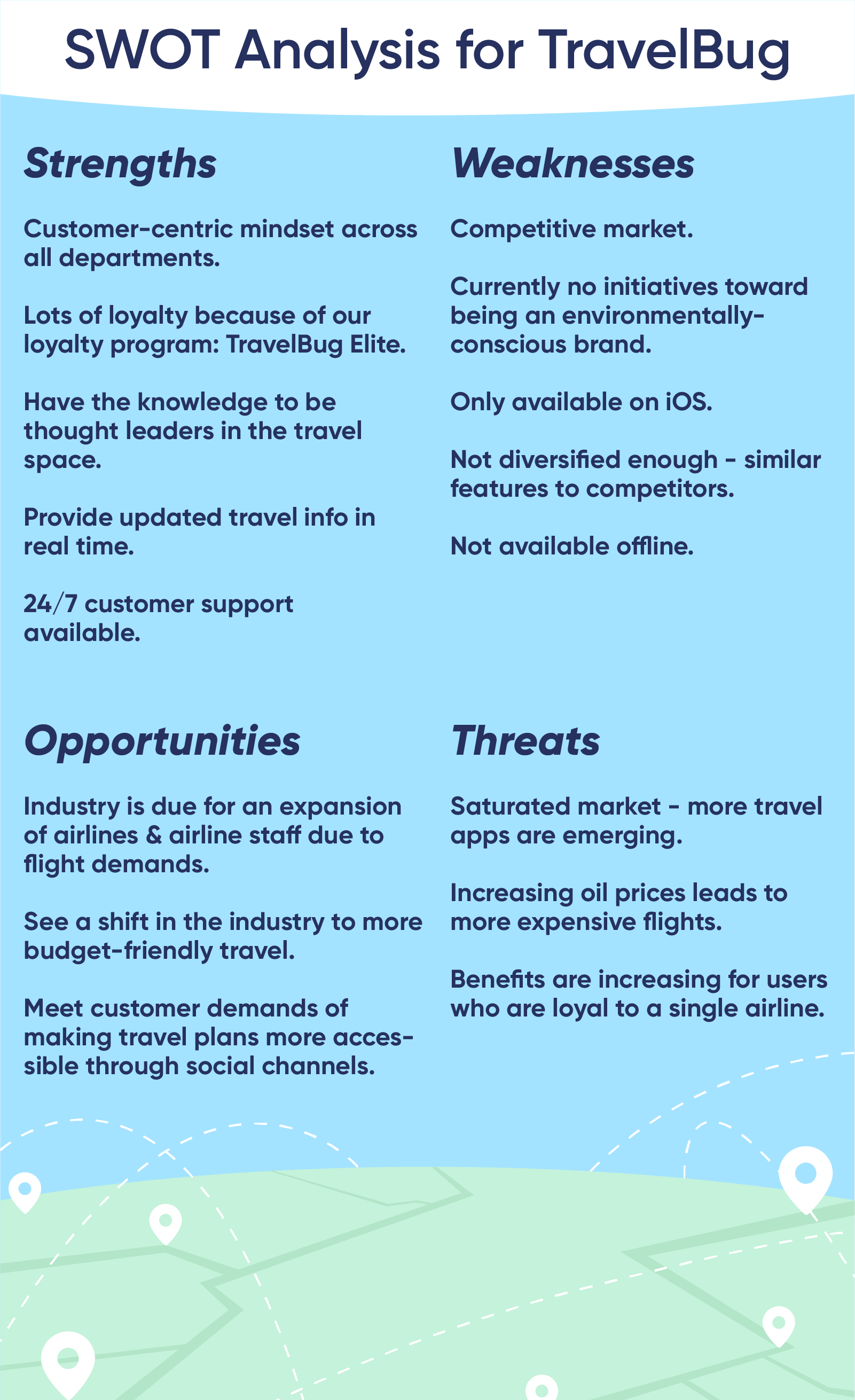As an app marketer or executive, you understand mobile business fundamentals. Your app falls into a specific category and caters to a specific audience with a specific need.
You also understand that every business decision you make not only costs money, it costs users. And even when the right decisions are made, you’re still losing 90% of your daily active users in the first 30 days.
Building a financially viable mobile app is not easy. In fact, the success rate of creating a profitable mobile app is a mere 0.01%.1
The only way to navigate the mobile landscape successfully is to understand your business at its core — the good, the bad, and the ugly. You do that by conducting a SWOT analysis.
What is SWOT Analysis?
SWOT stands for strengths, weaknesses, opportunities, and threats
Growing up, you probably completed a number of strengths and weaknesses exercises to reflect on what you’re good at and what you can improve upon. That’s what SWOT analysis does for business planning.
Strengths and weaknesses require you to look internally — such as different assets, gaps, and resources that are available within your company. Whereas opportunities and threats are more external — looking at the competitors, market, and trends outside your company.
By identifying the internal and external factors across your company, you create a foundation for building and achieving your KPIs and business goals.
We’ve put together a handy SWOT analysis template to help you get started.
SWOT Analysis Example
You can conduct several variations of a SWOT analysis depending on your industry. Here’s an example of a SWOT analysis done on a fictitious travel app:
Benefits of SWOT Analysis
While conducting a SWOT analysis doesn’t offer a direct solution to any one problem, it helps identify and analyze potential risks that impact your business. And, best of all, it’s free to do.
Some benefits of SWOT Analysis include:
- Understanding your business on a deeper level by looking at it from a different perspective
- Acknowledging and mitigating any risks or threats to your business
- Exploiting opportunities and identifying your key differentiator
Drawbacks of SWOT Analysis
SWOT Analysis is not a problem-solving tactic. It’s more suited for the planning process in conducting a business strategy. Its limitations and ambiguity can be a waste of resources for businesses that have already identified their market challenges.
Some drawbacks of SWOT Analysis include:
- No way to prioritize certain strengths or opportunities over others
- SWOT leads to a ton of ideas, but no clear next steps
- Some information from a SWOT analysis might not be precise
The Right Way to Conduct SWOT Analysis
When done right, SWOT analysis can prove to be very beneficial by unmasking risks and opportunities that business leaders might not have caught otherwise.
When done poorly, teams might find that they’re not getting anywhere. Any time you put different departments in a room to brainstorm strategy, you risk muddying the waters with groupthink or analysis paralysis.
Here are a few tips on conducting SWOT analysis the right way:
- Set time limits. Just like brainstorming, don’t make this an open-ended meeting. Set a limit for the entire meeting (give it 1-2 hours), then break it down into how long you want to spend on each item.
- Start with written ideas. Avoid groupthink by having everyone write their ideas down first and share them later. This gives everyone a chance to speak.
- Organize the ideas. Once everyone has their ideas down on paper, organize them on a whiteboard or wall and group similar ideas together.
- Discuss. After the ideas are organized, have a brief open discussion that allows people to explain their ideas or inspire new ideas.
- Prioritize. Once the discussion is over, have everyone vote for which ideas they think should take precedence.
- Take action. Lastly, agree on the action items that should follow the meeting. Look at the calendar and establish some key timelines and milestones for the winning ideas.
Making SWOT Analysis Actionable for Your App
Building a list of actionable takeaways is the most important step in conducting a SWOT analysis.
When a good SWOT analysis is conducted, there should be some crossovers. For example, some of the external opportunities you identified will most likely combat your internal weaknesses. And some identified weaknesses might even help you avoid external threats. This strategy, also known as TOWS analysis, works like this:
- Strengths-Opportunities: Use your internal strengths to take advantage of opportunities.
- Strengths-Threats: Use your strengths to minimize or mitigate threats.
- Weaknesses-Opportunities: Improve weaknesses by taking advantage of opportunities.
- Weaknesses-Threats: Eliminate weaknesses to avoid threats.
Creating connections across your SWOT analysis can help build out strategies to better your business. For example, if one of your weaknesses is users churning within the first 3 days of install, you might look for opportunities to improve your user onboarding experience.
For example, one of TravelBug’s weaknesses is having no environmentally-conscious initiatives, but they could also see this as an opportunity to grow their audience.
Further Reading on SWOT Analysis and Strategic Planning
- Check out Porter’s 5 Forces to understand the competitive climate of your business environment and potential profitability.
- Here’s a detailed SWOT analysis example to build a template or compare to yours.
- And here’s a video of a SWOT analysis conducted on Starbucks as an example so you can see it in action.

The Mobile Marketing Metrics that Matter to CMOs
Subharun Mukherjee 
Heads Cross-Functional Marketing.Expert in SaaS Product Marketing, CX & GTM strategies.
Free Customer Engagement Guides
Join our newsletter for actionable tips and proven strategies to grow your business and engage your customers.














































